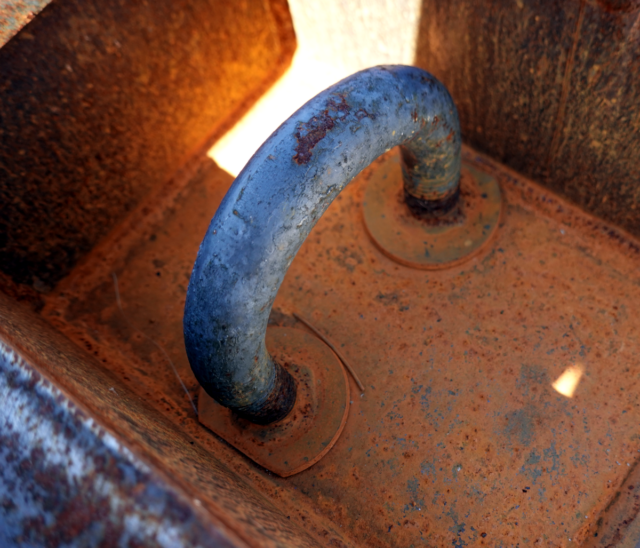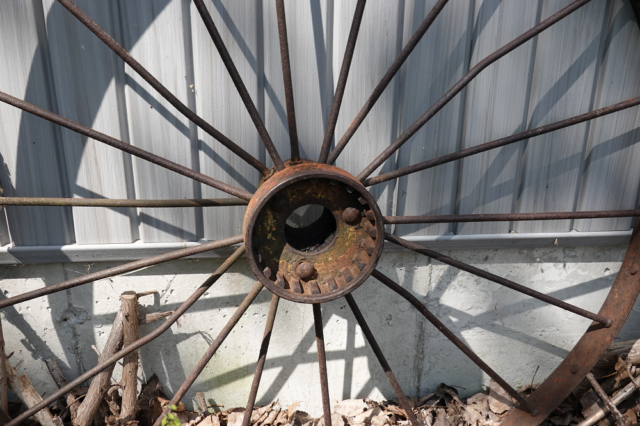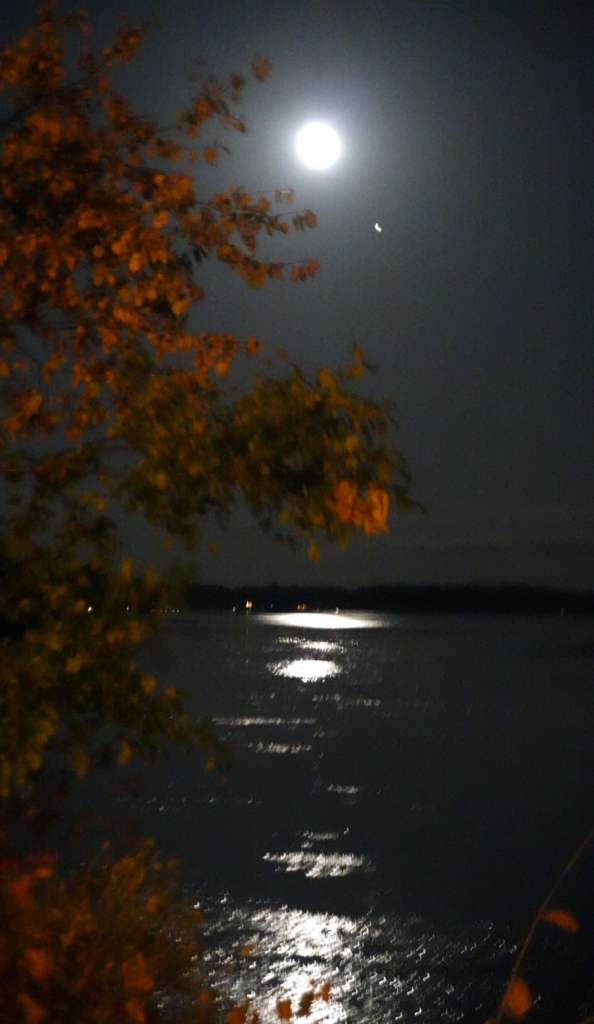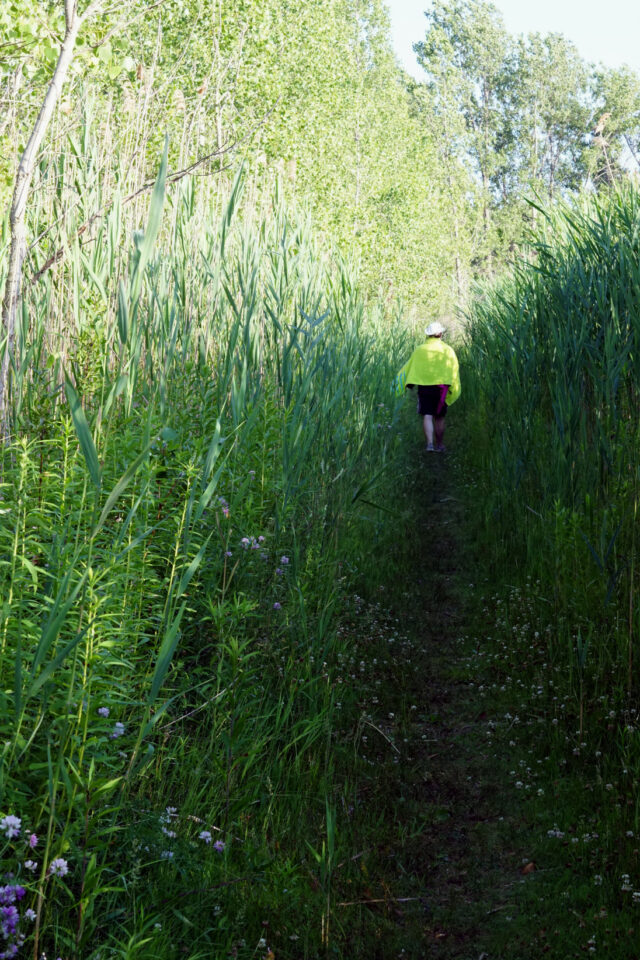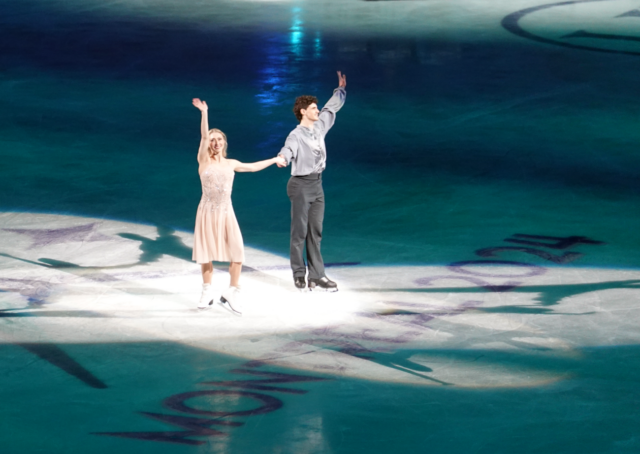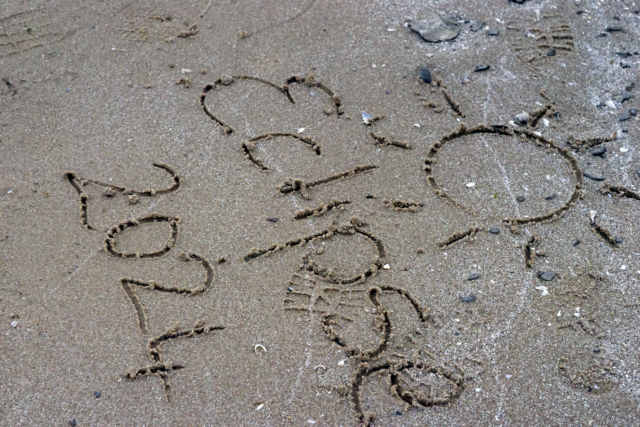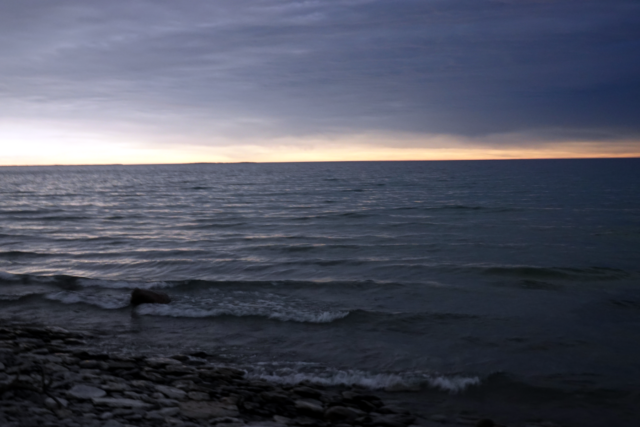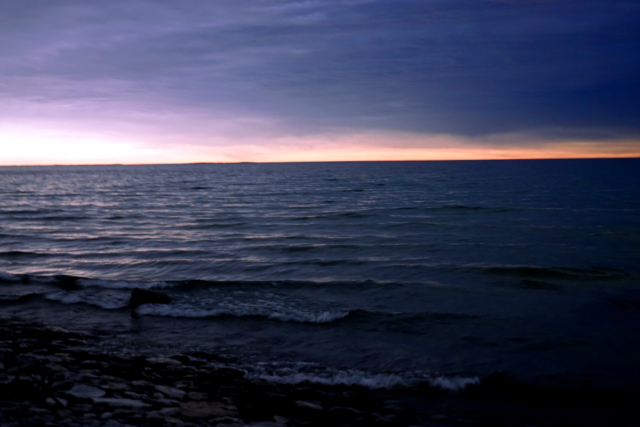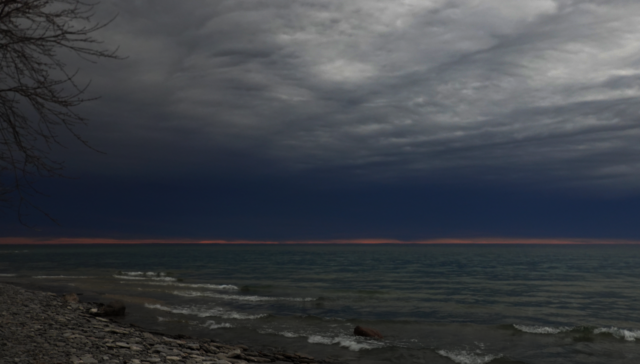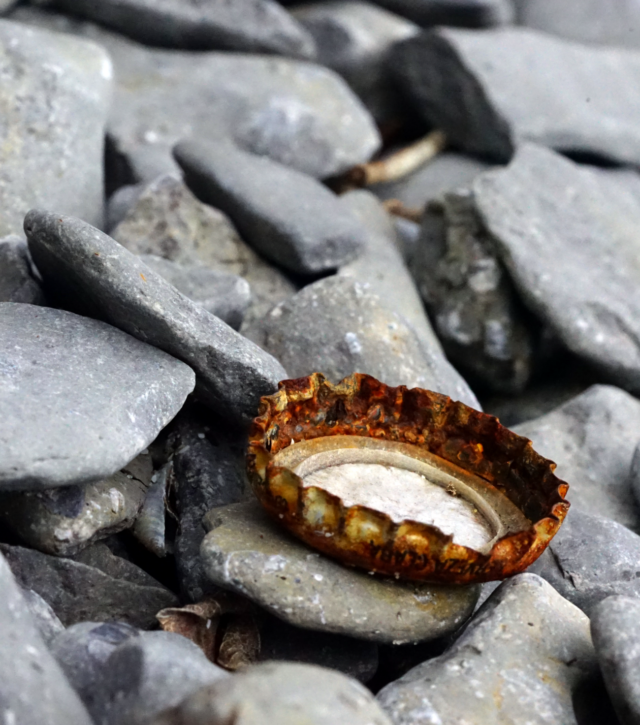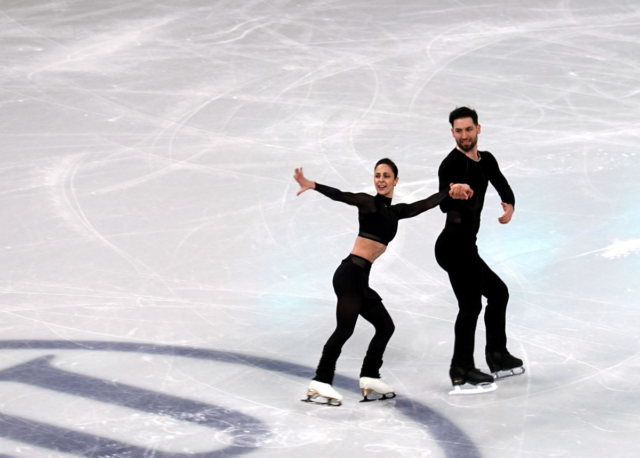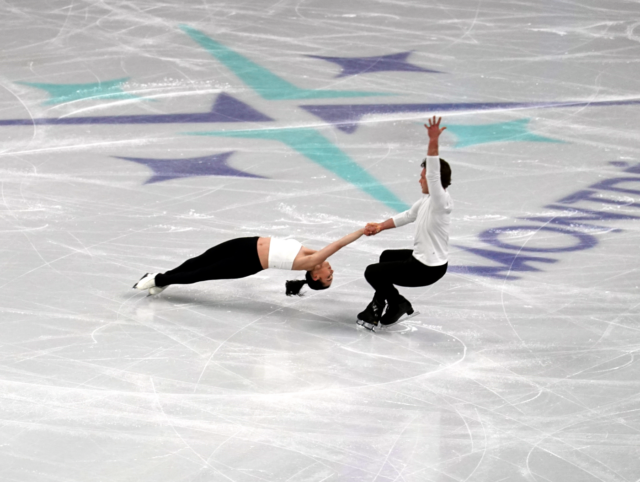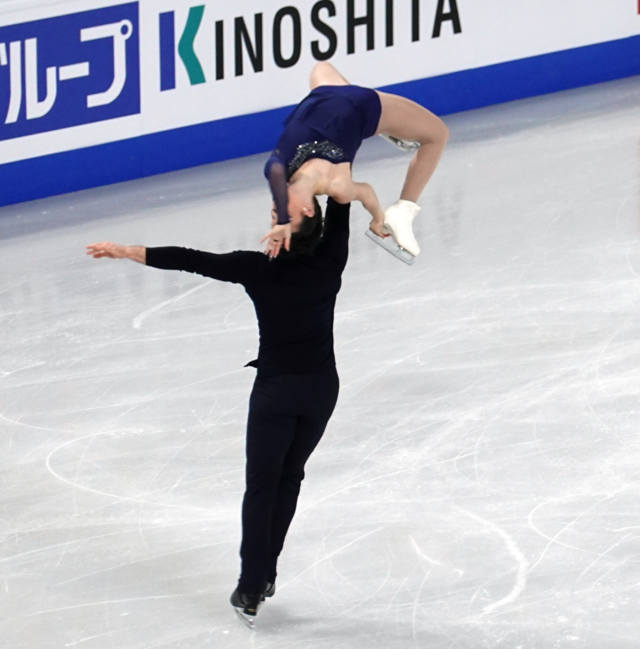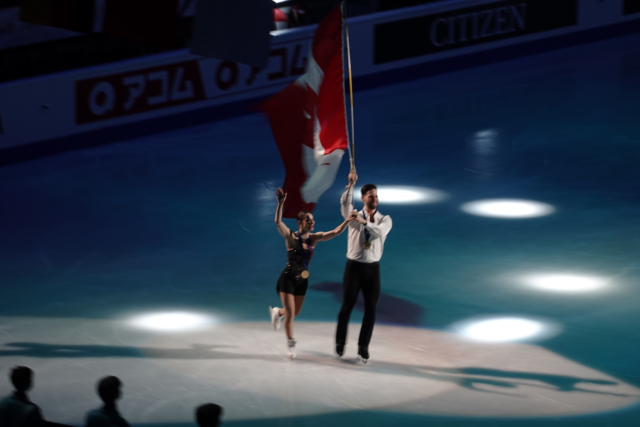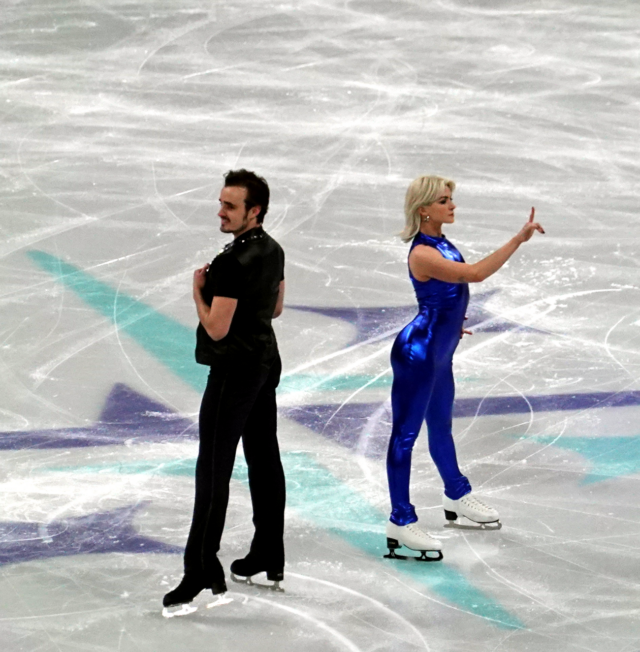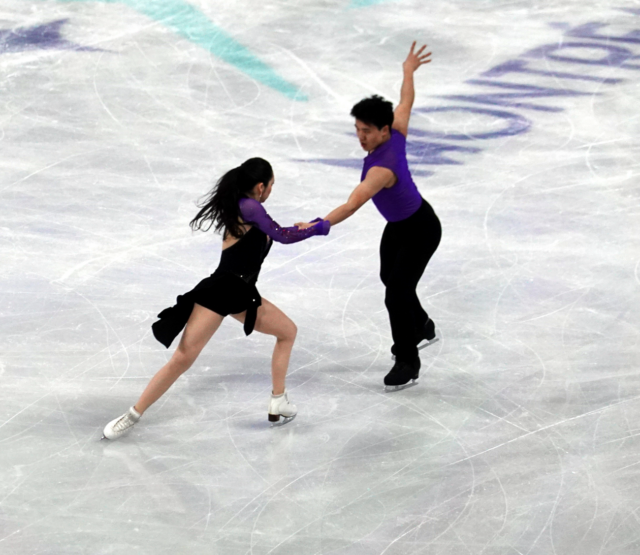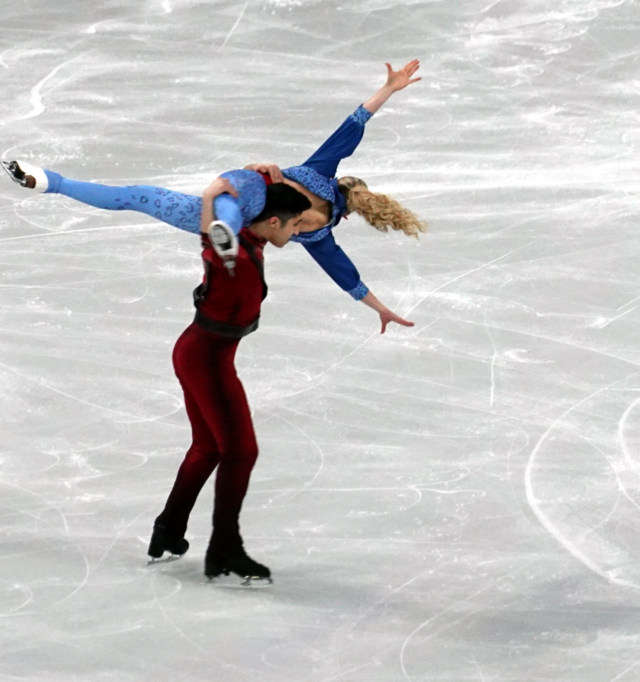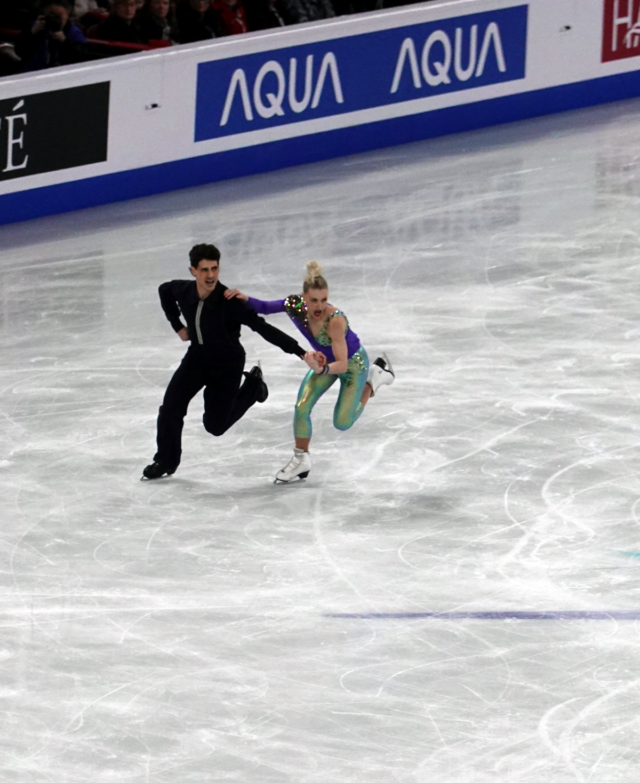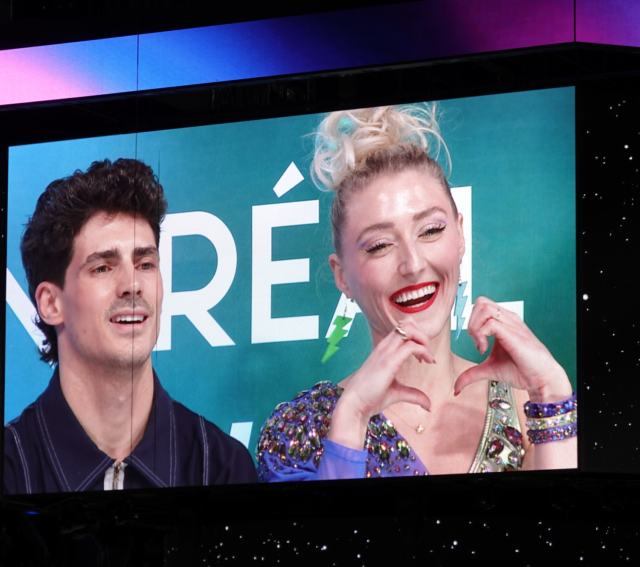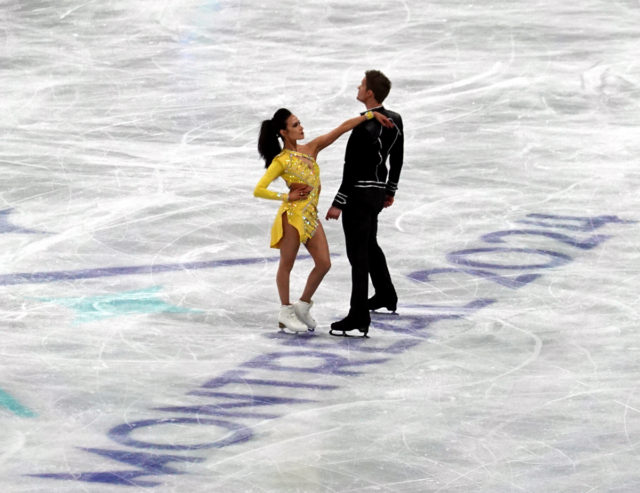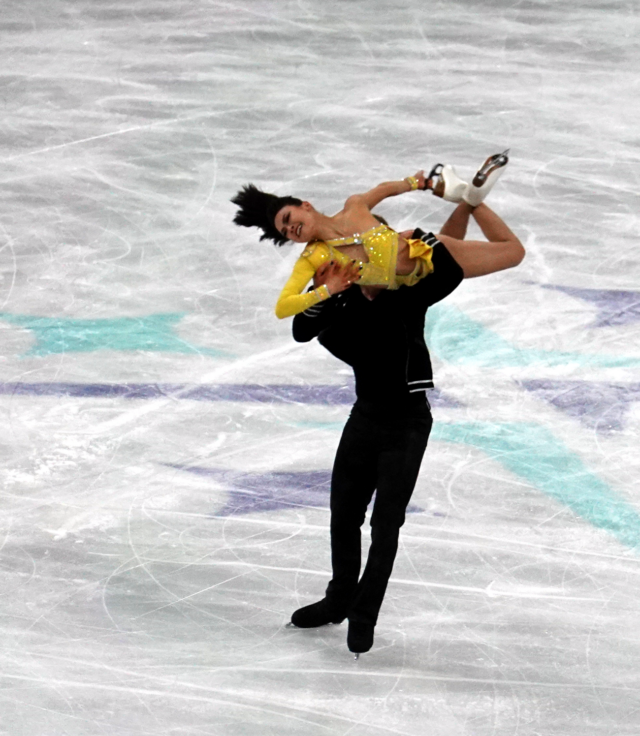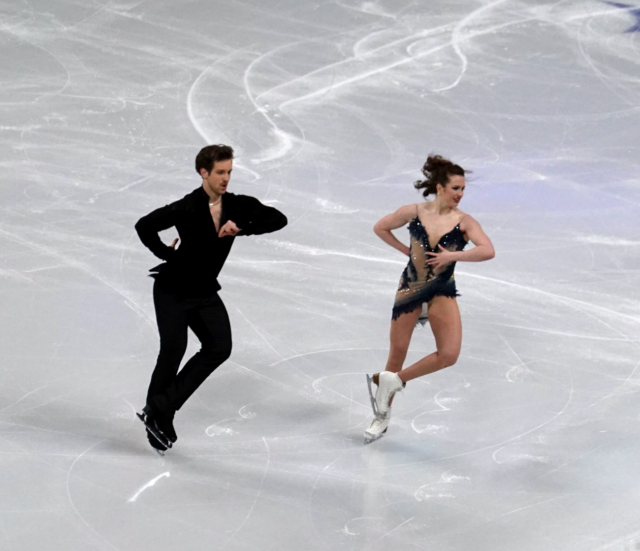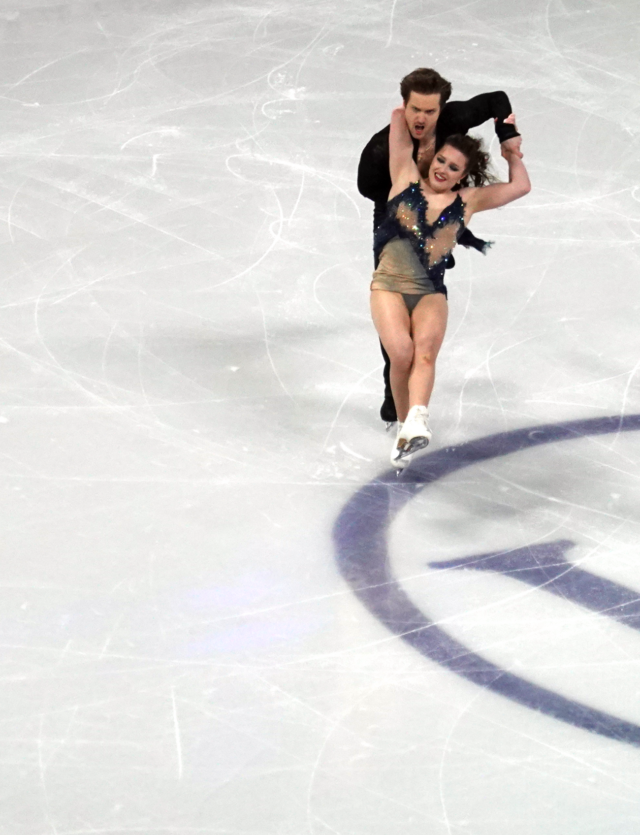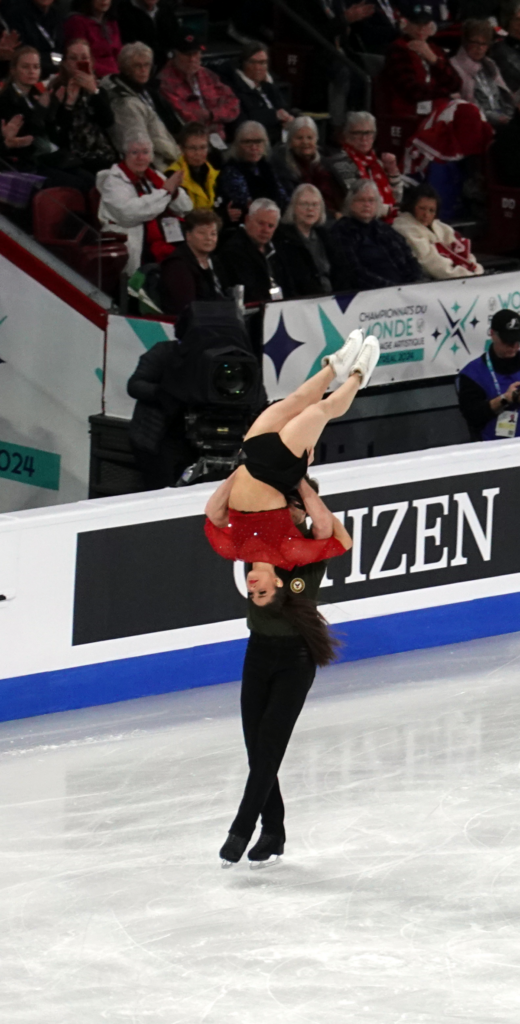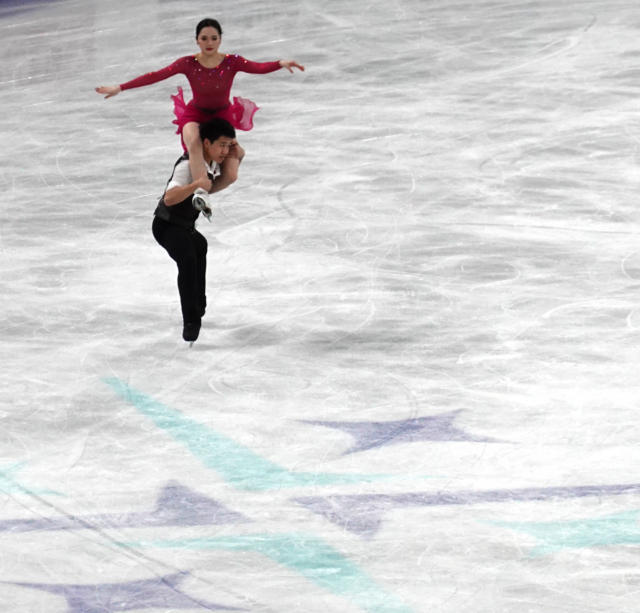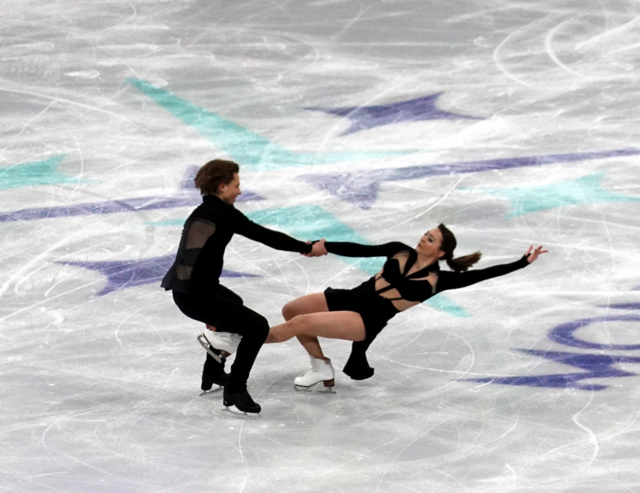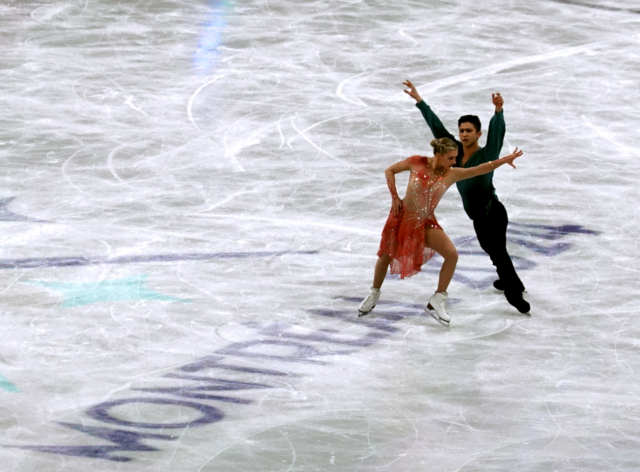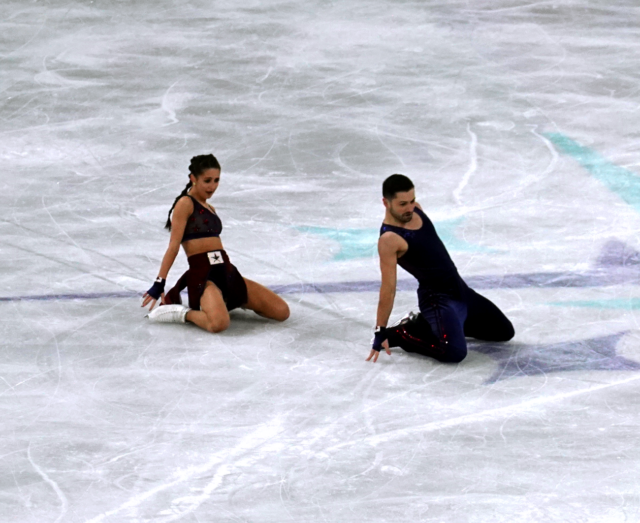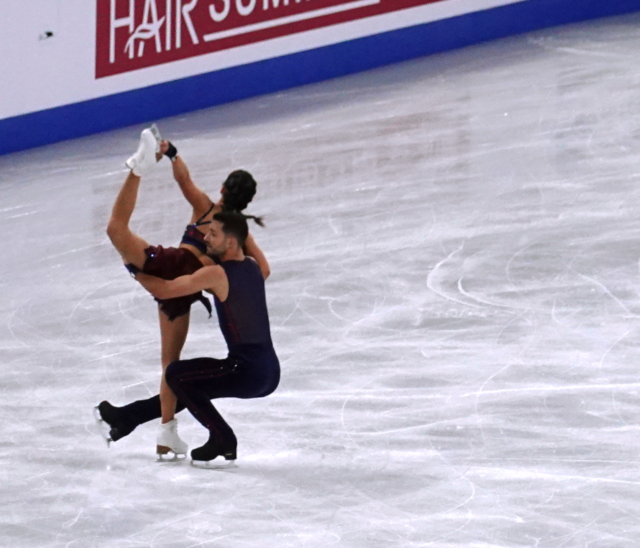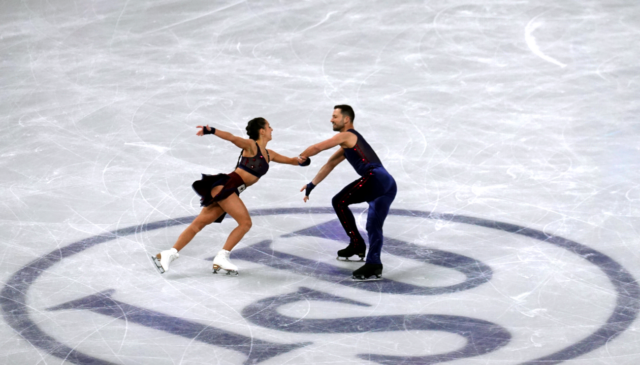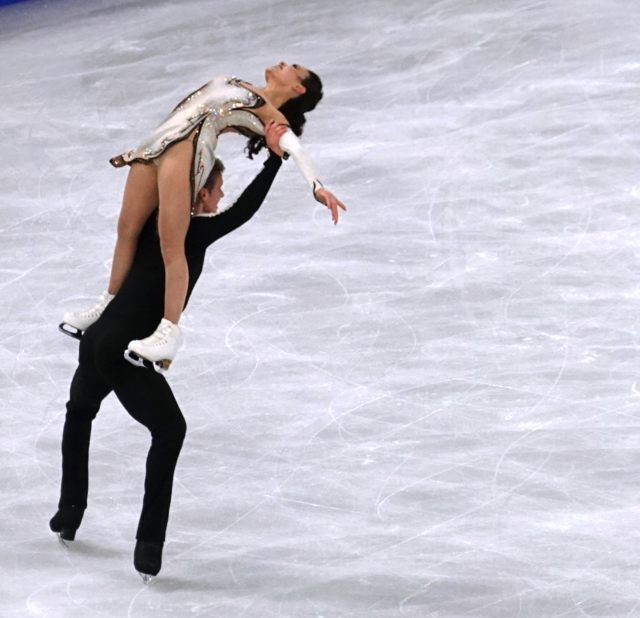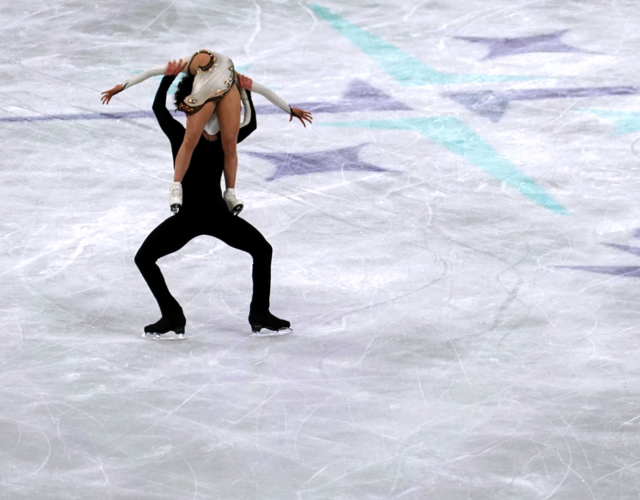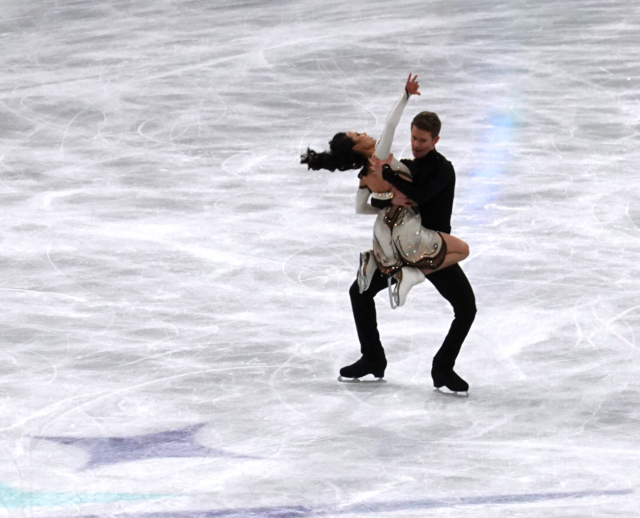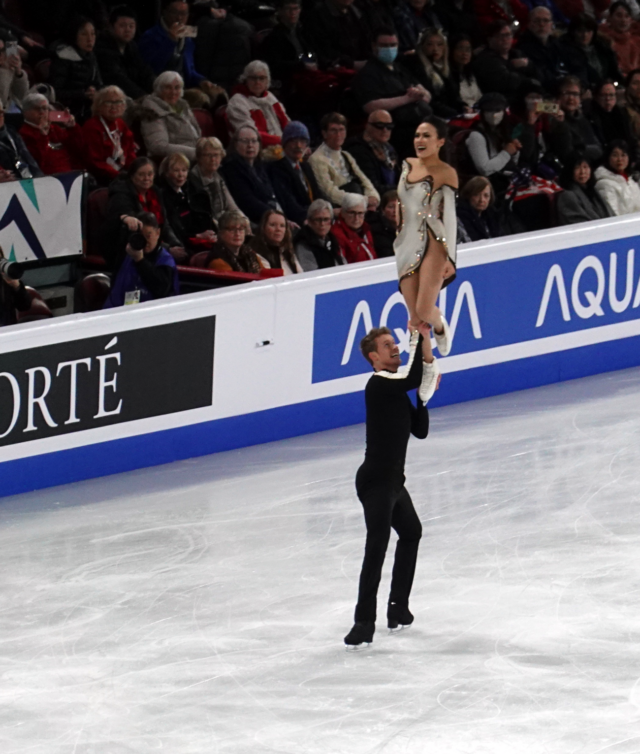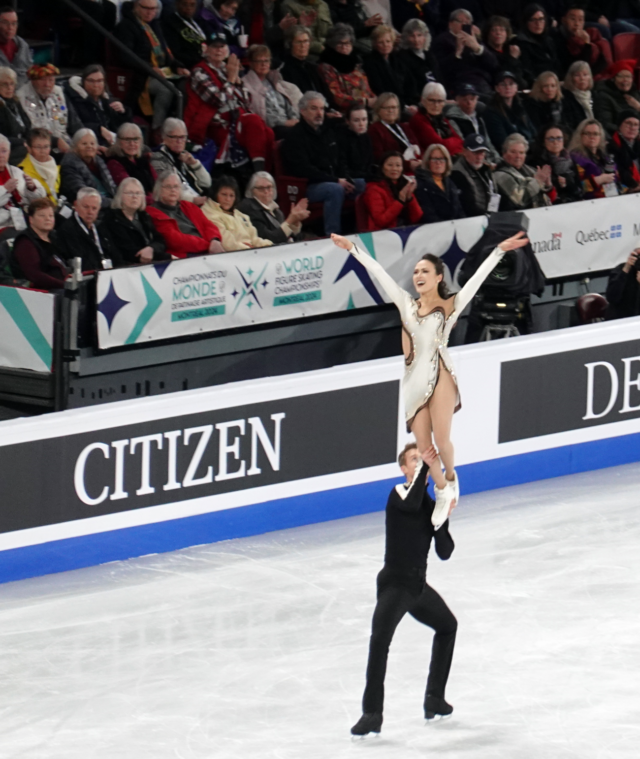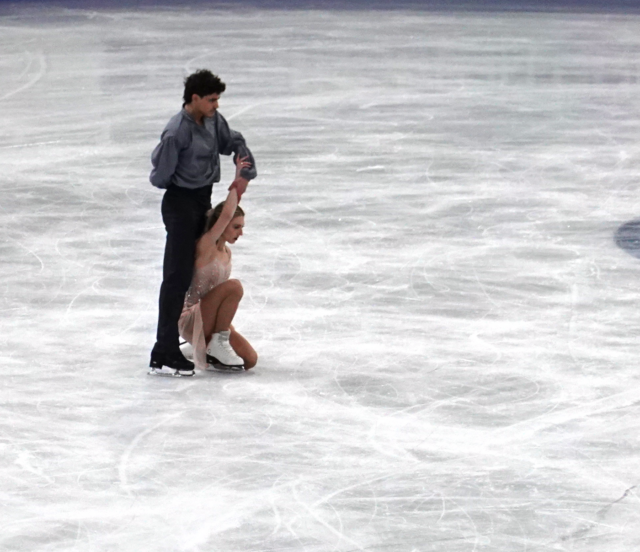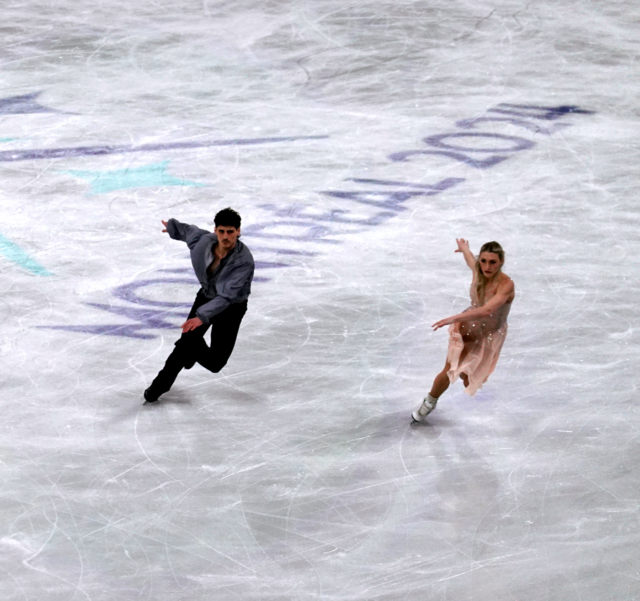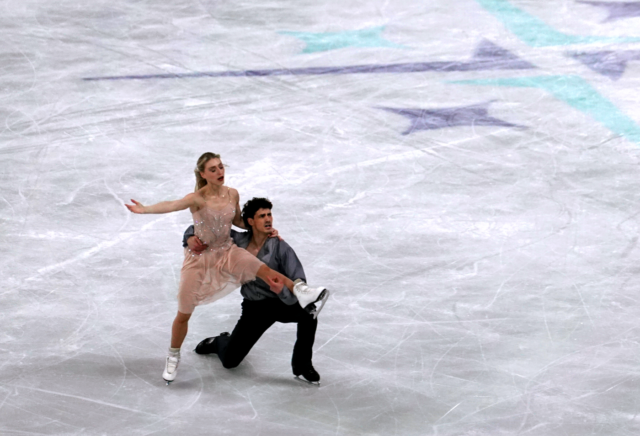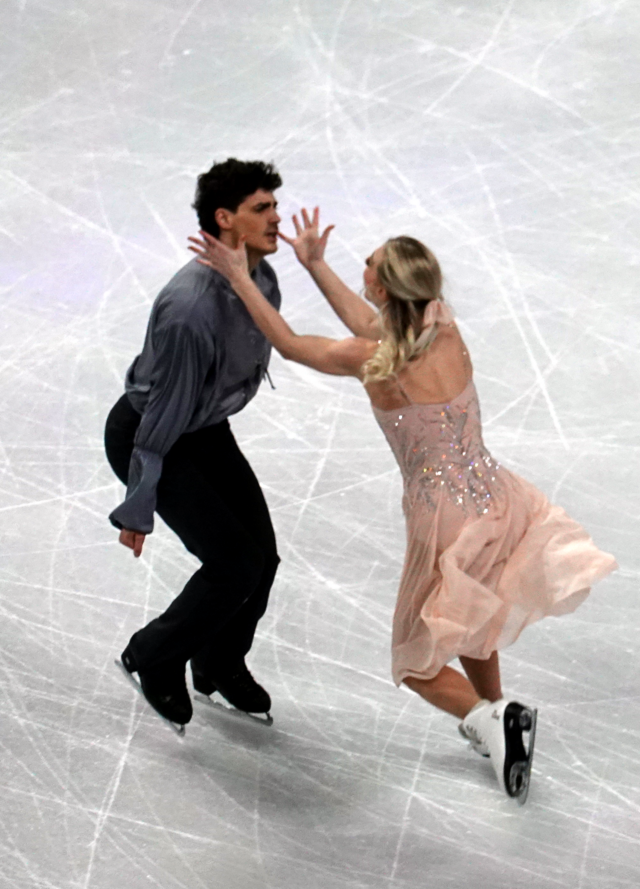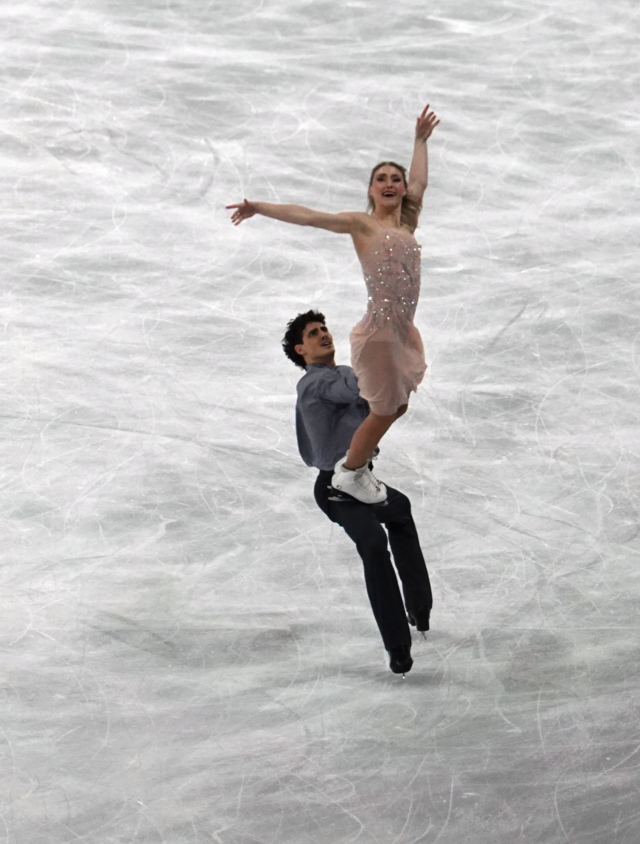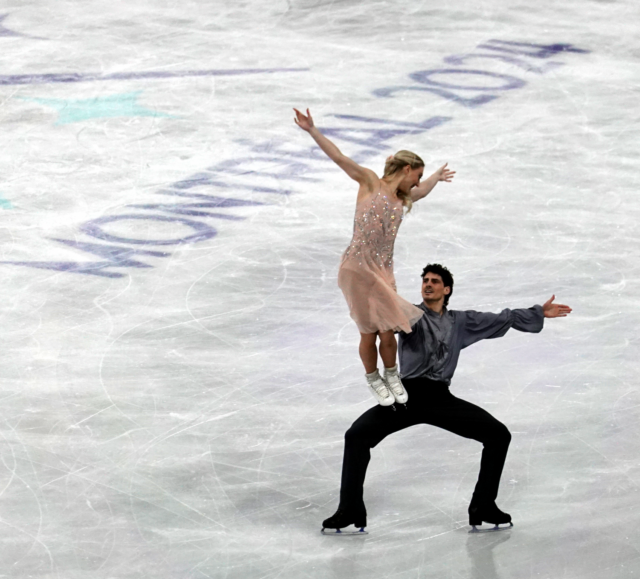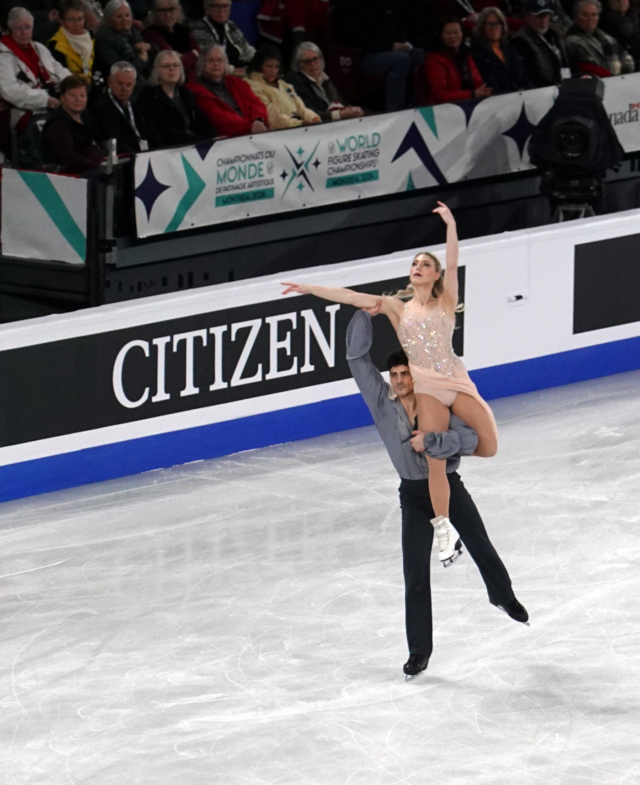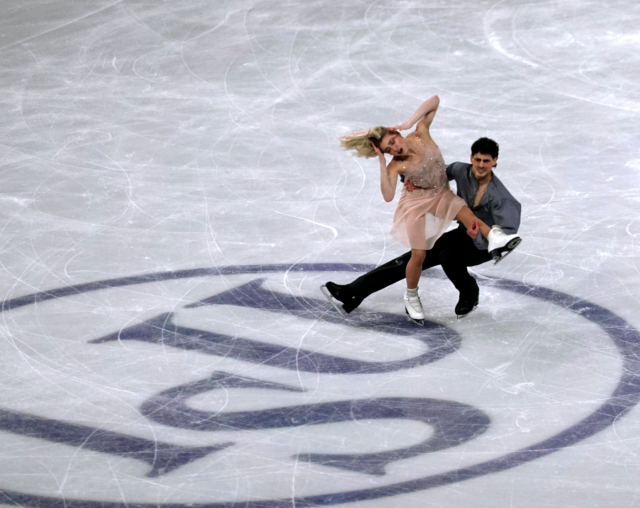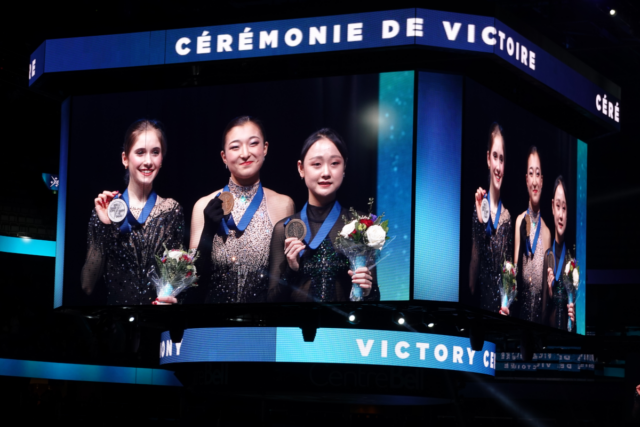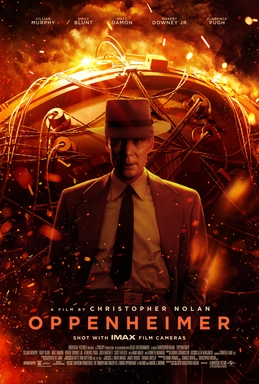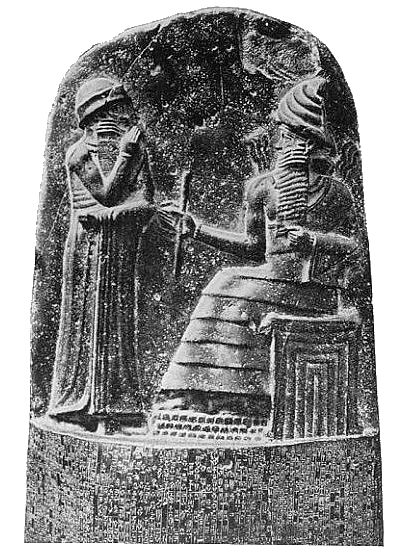The Showman

What a book! A biography of a certain time in a person’s life with historical context – how perfect. If Anne Applebaum loved it, I was in (she’s the author of two incredibly detailed and horrifying books on eastern Europe and the Soviet Union, Gulag: A History and The Iron Curtain: The Crushing of Eastern Europe, 1944-1956).
One should never go in for hero worship, including of people like Zelensky, who are doing pretty big things against very powerful enemies. I knew nothing of his background save for his comedy roots. Simon Shuster taught me that was a tiny drop in a bucket as Zelensky was not just a performer but a writer, director, and producer. He was a very successful businessman whose career was intricately linked with Russia, and who performed and spoke mostly Russian.
According to Shuster’s portrayal, built upon numerous interviews with the president and his colleagues, Zelensky was used to getting what he wanted in the entertainment/business world. Once he won the presidency (on not much of a platform other than to eradicate notorious corruption in Ukraine) with no political record to go on other than his show, Servant of the People, Zelensky was up against not only Vladimir Putin but also the west’s initial intransigence upon Russia’s invasion of Ukraine. Big challenge even without the invasion. But then he used his background to become the face of the war and, ultimately, of Ukraine’s survival.
In his transformation from the entertainment industry to politics, Zelensky mastered social media as a political tool, as much for his own people as for the world. Through his direct appeals, he won many over to Ukraine’s cause. He also made it possible for everyone to see the war in real time. It is easy to forget from our cushy position in the west how strong and ugly a force Russian imperialism (and propaganda) continues to be. The author is perfectly placed to capture all of this.
Simon Shuster is a Time Magazine senior correspondent with an obvious focus on Russia and Ukraine. He was born in the former Soviet Union and moved to the US when he was young. He grew up speaking Russian and his mom was Ukrainian. He has relatives who have been directly affected by the war. Banned from Russia in 2015, Shuster recognizes that he doesn’t have direct access to report from there. However, he is a good researcher and a good interviewer, speaking to Zelensky’s colleagues and wife Olena Zelenska numerous times.
Most importantly, Shuster is not an apologist for Zelensky. He doesn’t turn him into a perfect leader.
A must read, as they say!
No Biographies, Eh?
I always write that I don’t normally read biographies (and autobiographies). It turns out I do! So far this year I have read four. Not sure why??? Maybe they’re less intense to read on the subway than my usual historical fare. Maybe I just like complaining that they are not contextual enough.
I can learn something from almost any book, so let’s get on with it.

My friend Julie lent me two books about strong women who, until recently, haven’t received their due appreciation and coverage. The first was Empress of the Nile: The Daredevil Archaeologist Who Saved Egypt’s Ancient Temples from Destruction by Lynne Olson. Even though Egyptian history is my favourite topic in grade 11 World History class, I didn’t know about Christiane Desroches Noblecourt, who was a French Egyptologist. Perhaps I should have because I am familiar with the famous story of the herculean effort to move the Abu Simbel Temples in the Nubian region of Sudan to avoid flooding from the opening of the Aswan High Dam. Little did I know that she was the major force behind this action conducted under the auspices of UNESCO.
Despite growing up in a time when women’s academic pursuits and work ambitions were not generally encouraged or approved, young Christiane Desroches pursued her passions by studying at the Louvre, working on site on archaeological digs in Egypt, and eventually teaching Egyptology. She was both smart and strong in order to stand up to the men in charge who were unused to someone else getting their own way! France had a deep relationship with Egyptian archaeology going back to Napoleon Bonaparte’s campaign there. To admit a woman to the ranks was a real challenge to the conservatives at the museum and French Institute of Oriental Archaeology in Cairo.
One aspect of the book I enjoyed was her appreciation of the excavation at Deir el-Medina, the workers’ village outside the Valley of the Kings (where pharaohs were buried in some dynasties of the New Kingdom). She valued objects of everyday life, as she appeared to value the modern day workers who toiled under difficult conditions to the benefit of European archaeological expeditions. Because she wasn’t allowed to officially be part of some of the expeditions, she often served as nurse, tending to ordinary people and getting to know them relatively well.
One interesting non-Egypt related part of her story is her resistance work during World War Two. That’s something I’d like to explore further as it’s a subject with which I am not very familiar. A group of Louvre officials was very involved in moving the museum’s treasures as the Nazis gained control. She risked her life to make sure historically significant objects were protected. This reminds me of the scene in the horrible Netflix adaptation of “All the Light We Cannot See.” The real-life version is much better!
It turns out that moving Egyptian temples is much like moving mountains; it took money (which had to be raised from about 50 countries), clever engineering ideas, and international diplomacy over a period of 20 years. This back story definitely doesn’t normally get as much play as the “move” itself. Told against the backdrop of increasing Egyptian nationalism (in context of hostilities with Britain and France during the 1956 Suez Crisis), it is at least an effort by the biographer to put the subject in context.
One last thing most history teachers (and lovers) should be grateful to Christiane Desroches Noblecourt for is her advancing of famous exhibits such as those devoted to Tutankhamun and Ramses II that toured the world (initially to raise money for the UNESCO campaign). I don’t remember the details, but I know my class went to see the King Tut exhibit in 1979 when it came to the Art Gallery of Ontario. Perhaps it was an early inspiration for my career in teaching world history.
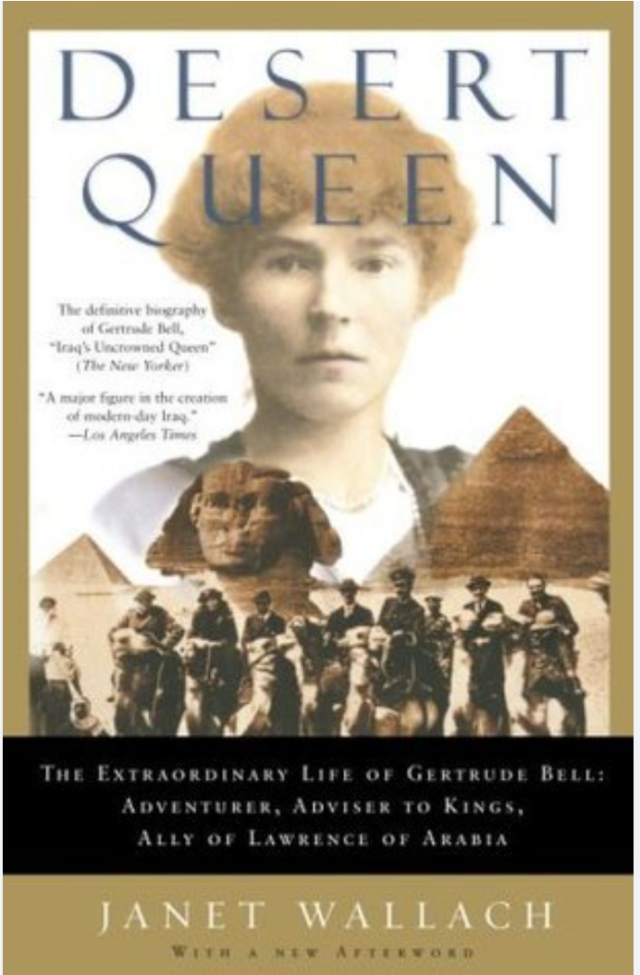
Desert Queen by Janet Wallach tells a similar story of a tough European woman entranced by the “east,” Gertrude Bell, a well-off English woman born in 1868. Growing up, she already displayed the intensity that would mark her whole life’s work. Never one to back down from what she wanted and was disapproved by noble society, Bell attended Oxford and was the first woman to earn a history “first” there, though that did not translate into a degree because no Oxford degrees were granted to women until 1920. While her views were generally considered progressive for the time, Bell was not in favour of women’s suffrage – more for class reasons – see this excellent online exhibit on this fascinating topic. Bell became a travel writer, mountain climber, “explorer” of Arabia, in the imperialist sense, amateur archaeologist, and eventually, a British diplomat in Mesopotamia (soon to become Iraq).
Gertrude Bell wrote enumerable letters home from her various travels and posts, as she had when she was at school in London and Oxford. Therefore, her life is very well documented in the sense that we know what she said about people, events, etc. However, she’s still a difficult woman to truly understand on a personal level. To say she seemed stoic is an understatement, though she did have at least two great loves that did not result in marriage or fulfillment, sadly. Gertrude Bell’s devotion to British imperialism seemed to be the driving force of her life and work. There are times when reading this book I wanted to (excuse the phrase) smack her! Only occasionally did the writer situate her opinions, class privileges and pro-empire positions within the context of the time. I found this incredibly frustrating, and I admit I took it out personally on Gertrude at times. I was sad though, when, in the end, despite her years of service and wide-ranging exploits, she died of a possible suicide, or at least an overdose of sleeping pills, in 1926.
As far as the Middle East goes, if I hadn’t already known how important World War one and its aftermath were to the region and the world, I would have found this book confusing with the often-paradoxical and/or hypocritical French and British promises to the Arabs and Jews, not to mention Kurds, made during and in the aftermath of the war. They all played out in how much control Britain was willing to cede in the newly created mandate of Iraq. Gertrude Bell’s views were initially what one would expect from a hard-core imperialist: keep the British in charge no matter what, and work with the tribes and personalities loyal to Britain, to the point of encouraging the failed King of Syria to become the first King of Iraq – Feisal, son of the Sharif of Mecca. In the end, Bell did soften somewhat to recognize that total British control was not in anyone’s interest, not least Britain’s.
Gertrude Bell’s writings and photographs are today the basis for the Gertrude Bell Archive held at Newcastle University. They have some interesting online exhibits that attempt to take a modern perspective on her imperialist views and how they interacted with her womanhood. It’s a great example for my students of the change in historiography toward uncovering women actors in history who should be part of the curriculum.

Not being a huge Rush fan, some might wonder why I chose to read Geddy Lee’s My Effin’ Life (which, being such a big, well-illustrated hard cover book, is not subway friendly). I can’t really say, but I did enjoy it. He starts off in a very historical way, with the story of his parents, who were Holocaust survivors. He put in the time to research well, and he is certainly aware of the multitude of ways this fact has influenced his life. Probably my favourite aspect of the book is his evolving relationship with his mother. Geddy’s father died young. Expectations were put on Geddy’s shoulders. He did not take the expected path: not excelling in school, taking up rock music, marrying a non-Jew. Meanwhile, Geddy’s mom kept the family afloat by running a neighbourhood store north of Toronto.
He’s also a Toronto boy, so I suppose I liked his references to the various places he lived while growing up, including Willowdale, near where I grew up.
I haven’t read a so-called rock bio before. Geddy saves his passion for his intricate descriptions of various recording processes and tour set ups. I found those interesting. Where he holds back on the details, perhaps understandably, is regarding his personal relationship with his wife. Being addicted to the touring life, Geddy obviously did not spend a lot of time at home. He knew he was often leaving home at the most crucial moments. Therefore, it’s interesting that at times in the book he seems to cut himself off from examining, in depth, his feelings on this topic. It’s not that he ignores the subject; it just doesn’t get the detailed treatment accorded to, say, the production process for an album.
The book runs the gamut of emotions, obviously from the tragic Holocaust stories, and, of course, the sad death of Neil Peart, to the funny band stories, especially the nicknames that they gave each other. Geddy is very funny and has a wide range of interests that he has clearly invested a lot of time into (and some he no longer values – which is good!). In honour of Geddy’s foray into being family historian, I tried listening to some Rush songs that don’t receive as much (if any) radio play; they still aren’t to my taste.
The last thing I’ll say about the book is that it is highlights Geddy’s intense collecting habit. There are many, many photos and documents and odd things throughout the book. As a historian, I admire that. As a person who has a basement filled with stuff, I pity it.

As a figure skating fan, I found it very difficult – yet mesmerizing – to read this book by American skater Gracie Gold. The title Outofshapeworthlessloser refers to the name she gave herself when in the depths of despair trying to make a comeback (or continuation of her career) after some difficult injuries and highly challenging family circumstances.
Without getting too much into detail on a subject where I could expand at great length (figure skating), let’s review Gracie Gold’s major results… In the first part of her career, she earned some very notable finishes at the world level: fourth at the 2014 Sochi Olympics, Bronze medal in the team event (first ever) at the Sochi Olympics, two US championships, fourth at the 2015 and 2016 World Championships. At the time, I didn’t have any particular attachment to Gracie Gold other than admiring her athletic jumps. She seemed very talented but somewhat unable to put together two good programs in one competition, something relatively common in skating.
Appearances can be deceiving, as we all know. As Gracie tells it in her very extremely forthright book, Gracie Gold was a concocted image: the blond hair to match her name, the stylish costumes, the product promotions, the perfect family, and on and on. Underneath it, Gracie endured the harshness of living in the bubble of a judged sport. She relates the soul-crushing styles of two of her coaches, one of them nicknamed Cruella, and the other whose real name she uses. He grew up a product of the Soviet skating system and transported the harsh coaching style to the US. Gracie and her, shall we say, big personality, endured years of what sounds like depravity under his tutelage, until she had had enough.
Due to many intersecting factors, including years of being in a judged sport, injuries and her family falling apart (dad was an anesthesiologist who got caught for using drugs and mom was an alcoholic who had very high expectations of her) Gracie fell into depression and an eating disorder. She suffered in silence for a long time (and highly criticizes adults for not recognizing this) before some kind people in the sport got her into in-patient therapy. That part of her story is pretty well known now.
Some things I didn’t know include that she had a breast reduction, went into coaching, and professes to still love the sport.
Where the book is the most challenging is the frank chapter on her relationship with former skater John Coughlin. As she got very close with him, he helped her career by introducing her to the world of skating workshops. He was being investigated by US Safe Sport for sexual assault when he committed suicide. Gracie plainly states she is of two minds when it comes to the man she considered to be a soulmate; she loved him, he might have raped others. It is really this chapter that got me thinking about the state of skating the most. It is most definitely not the perfect world. No sport is. But for the young, I worry about the effects of pressures and predators.
Gracie Gold has been widely praised for telling her story in a no-holds barred manner. I fully agree and feel every young female athlete, no matter their sport, should read it.
Next up, I’ll be writing about a very profound book of Canadian history (or rather, the story of Canadian slavery usually omitted from Canadian history): The Hanging of Angelique by Afua Cooper. And I am almost finished The Showman (about Volodymyr Zelensky) by Simon Shuster and will surely have a lot to say on it.
Eclipse From Presqu’ile Provincial Park
Well, it was cloudy, but we did see some cool stuff! When it went dark, the horizon out on Lake Ontario was glowing a beautiful pink. After, we stayed around and waited to see the chunks of the sun returning. Unfortunately, Val didn’t get to use his fancy filters, but he got some great shots of the pac man sun.
See video below.
Montreal Trip of a Lifetime – World Figure Skating Championships
Pairs were first up! All the pressure was on Canadians Deanna Stellato-Dudek (age 40, yes, you read that correctly!) and Maxime Deschamps, who live and train in Montreal. They had two great skates. Their fellow Canadians Lea Pereira and Trennt Michaud and Kelly Ann Laurin and Loucas Ethier also had great short programs! The crowd went crazy. I had my “Go Canada” sign at the ready. The other two Canadian pairs didn’t have the greatest free programs but still did well. I didn’t take any pictures of Deanna and Max’s free program because it was just too tense and exciting an atmosphere. The Japanese pair of Riku Miura and Ryuichi Kihara (who train in Oakville) put up a great defense of their gold medal from last year despite not skating most of this season. Unbelievable excitement in the final flight. Go Canada!!!
I was really there for the ice dance!!! The rhythm dance with its 80s theme was very exciting and loud. Since it was almost a home competition for so many (the Canadians plus the 13 teams that train in Montreal) the crowd was immense and intense! I didn’t take pictures of everything – just too much excitement – but here are some highlights. I have so many teams I love, but Piper Gilles and Paul Poirier are of course my MOST favourite. I had my “Piper and Paul Gold” sign ready to go! They finished in third place after the rhythm dance – not a surprise. Their program to “No More I Love Yous” and “Addicted to Love” is still the best, in my opinion, at catching the 80s ethos. There was WAY too much Bonnie Tyler for my liking.
For the Ice Dance free dance, the competition was incredible. The crowd was crazy loud! Again, I have so many teams that I love. Piper and Paul came out and skated so well under such intense pressure. They won the free dance and finished second overall. That’s one place higher than the last two years. And that is huge in ice dance. Their Wuthering Heights program is a masterpiece. I was far too nervous to take photos. Thanks Val for subbing in!
I didn’t take many photos from the men or women but they were both fantastic. I love Kaori Sakamoto!! Ilia Malinin is not my favourite skater but his technical prowess is unmatched. Seeing Yuma Kagiyama skate in person was sensational!
Oppenheimer
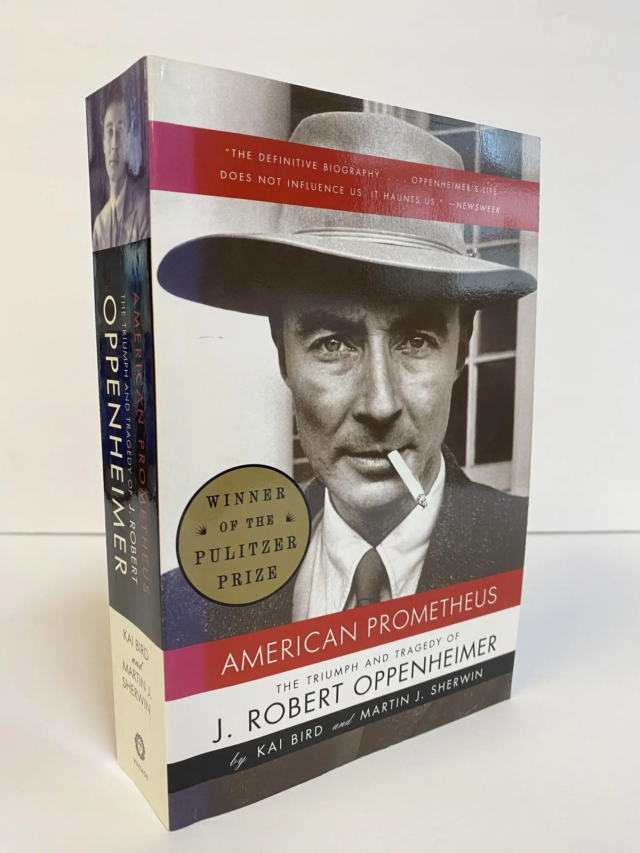
Back in October I finished American Prometheus, an intricate biography of J. Robert Oppenheimer. I had planned to see the movie in November but that didn’t happen. All these months later, it’s only playing in one theatre in Toronto: the Kingsway in Etobicoke. Val and I finally saw it yesterday. I had purposely not read any reviews or watched the trailer in anticipation.
Though I am not a film person, I was not disappointed. In fact, it was an incredible effort to turn such a detailed and complex book into a movie. Normally I don’t like modern movies because they are so fast-moving and loud, as in bombastic, no pun intended. This film has those qualities in a good way. It had to be fast to weave multiple timelines into one storyline. It had to be loud because of course it’s the atomic bomb we’re talking about here. It has an interesting, dark score that also makes use of non-musical sounds to complement some of the apparently not CGI visual effects.
Not being a film person, I didn’t know anything about Christopher Nolan or his previous movies. I didn’t even know who Cillian Murphy is. No matter. It’s best to go into these things cold with few expectations, otherwise a movie is usually a let down from a book. Not this one. It is certainly different from the book (as one would expect) but it is also mostly faithful. Perhaps Einstein is emphasized more than in the book (not sure why other than he’s a recognizable figure). Perhaps a few dozen people are left out (Oppenheimer knew A LOT of people). Of course certain events had to be skimmed over to get it all in. But the gist of it is there. And of one of the keys to the book is that the reader is left unsure of what to make of Oppenheimer. He’s not perfect. He’s not a hero. He has some great qualities, and some really bad ones. His character leaves the same residue in the film, though he is probably more sympathetic in the film than the book.
I asked Val what he thought the overall message of the film is; he said politics and power would always intercede no matter what one’s intentions are. Interesting. I am normally the cynic. I think it’s a pretty depressing thing to live not only in the nuclear age but in the climate crisis. The film says to me that we are complex beings who live in a messy world of our own making. History is as life.
In comparing this movie to another recent release, Maestro (the story of composer and conductor Leonard Bernstein), Oppenheimer wins on every single level. I read quite a few articles about Maestro after I watched it on Netflix because I was perplexed by its overdone approach; it seemed to go for such realism that it was difficult to watch. The Bernstein character was always smoking in the movie. Though this may have been true in real life as well, it became the signature of every single scene, to the point where I could concentrate on almost nothing else. Oppenheimer, too, smoked to excess in real life. But the film makers chose to contain it so it did not distract from the point of the movie. I think that is called art.
Biography need not be hagiography. It’s nice that Oppenheimer doesn’t make its namesake character into a great man or god.
The Five – An Astonishing And Heart-Wrenching Book

Hallie Rubenhold possesses the best of the writer’s and historian’s skills. She gets it – and is able to communicate such in a beautiful and frank way – that history isn’t solely about the past: it’s about bettering the world of today by making the reader see complexity instead of simplicity. Late Victorian British social history carries so many parallels with today, especially the gap between rich and poor and the moralizing that goes on when one group looks at the other.
Imagine this: a book about the victims of Jack the Ripper with not a single detail about their deaths. Rubenhold has investigated every detail that can be found (or triangulated) about the lives of Polly Nichols, Annie Chapman, Elisabeth Stride, Catherine “Kate” Eddowes, and Mary Jane Kelly.
The other day while waiting for the bus outside Dufferin Station, I saw a woman sitting on the ground, obviously not in the best of health. She had many bags, was coughing, and smoking something so horribly foul smelling. It’s easy to turn a blind (or crude) eye these days to people on the streets. But I caught myself: what is the difference between her and the five women? On that same day, on the bus, a man called a woman a “f-ing b_ _ _ _.” A woman chastised him, even challenging him to a fight. I felt the spirit of the women on that bus, not because they’d be quick to a fight but because they had to stand up for themselves every single day!
Rubenhold goes to great lengths to paint many-layered pictures of the five women’s lives. The common factor was struggle, both as women and as members of the working class. She is careful to say what is not known for sure (documents being lost, not all things being able to trace). But she also uses the conditional tense throughout to infer the potential feelings and conflicts of struggling women of that time and place. This is particularly true for their relationships with the men in their lives.
Rubenhold’s subjects are women who didn’t always have a place to stay at night. Gerunds abound: tramping, charring, prostituting themselves (in only one case for sure). Signing themselves in and out of work houses. Having children die in their arms. Coming from situations where multiple siblings died. Losing parents to disease at a young age. The tragedies went on and on.
There’s a lot of talk, not surprisingly but also sensitively, of alcohol and alcoholism. In the passage below discussing the fifth victim, Mary Jane Kelly, Rubenhold shows her gift of positing what might have run through the woman’s mind:
However, drink also offered a convenient escape from a miserable existence. It dulled the fear of unwanted pregnancy and disease, a very real possibility in every penetrative encounter. It obliterated and it quieted, even for a short time, feelings of self-loathing, guilt, and pain, and traumatic memories of violence.
Earlier in the book, Rubenhold tells the complicated story of Kate Eddowes, liver of an almost nomadic life, for a time, as a seller of chapter books and ballads. Travelling Britain with her ‘husband’ Thomas Conway, they often attended hangings in search of crowds to buy their tales. In one instance, the person being hung was a relative of Kate’s. Kate, being literate, would certainly have had a hand (if not sole authorship) in the writing though Thomas seemed to see himself as the author. Rubenhold quotes from the ballad which shows sensitivity to the plight of the condemned relative. Once again Rubenhold sees the humanity in Kate even at the most gruesome time:
Satan, Thou Demon strong,
Why didst thou on me bind?
O why did I allow thy chains
To enwrap my feeble mind?
Before my eyes she did appear
All others to excel
And it was through jealousy,
I poor Harriet Segar killed.
May my end a warning be
Unto all mankind,
Think on my unhappy fate
And bear me in your mind.
Whether you be rich or poor
Your friends and sweethearts love,
And God will crown your fleeting days,
With blessings from above.
At the end of the book, Rubenhold includes a list of the items found on four of the women. I find this a particularly effective, if chilling, way to end the book. Mostly the lists are filled with items of clothing, for layers were probably a survival tactic. Kate’s list is the most interesting to me. In addition to bonnet, jacket, and multiple skirts she had tin boxes of tea and sugar, soap, knife, teaspoon, cigarette case, pawn tickets, a partial pair of glasses. Finally, “twelve pieces white rag (some slightly bloodstained (menstrual rags).”
Hallie Rubenhold has brought hidden lives back into the light.
American Prometheus
Started Sept. 20. Finished Oct. 17. Nearly 600 pages (more for the notes and bibliography)!!!
I have not seen Oppenheimer (the movie) but now I want to! I really want to record my thoughts about the book first, however.

The first thing I want to say, without meaning to overblow anything, is that this is one of the best books I have ever read. And most of the books I have read in my life are in this genre: American history (though this is technically a biography).
I absolutely love the writing style of Kai Bird and Martin Sherwin. How two authors so seamlessly put together a book I do not know!?! Their research is meticulous. They are so matter of fact and relatively balanced in their interpretation of their very complex subject. Oppenheimer, if I am to believe these wonderful authors, was an incredibly layered person. I found him absolutely fascinating. That doesn’t mean that I love him; I take my cue from authors who clearly respect him but are honest and candid about his good and bad aspects. I will say, though, that I cried when he died, fittingly, at the end of the book. I was sitting in my chiropractor’s office waiting for him to come in. I think I was crying because the story was over.
My purpose here is not to review Oppenheimer’s life – read the book for that. It’s to talk about how to incorporate history into biography, successfully. The subject of a biography is usually both a reflection of their times and a shaper of their times. The best subject of a biography is also someone who grows and changes. Static subjects are boring.
Oppenheimer checks all the boxes. He came of age as a scientist near the dawn of quantum physics. He used his skills – especially of integrating other people’s work – to manage a large project (the creation of the first atomic bomb) driven by his desire to defeat the Nazis. But his true imprint lay in his attitude toward the burgeoning nuclear arms race after the war. And in his openness to new ideas across so many disciplines, not just science. So, yes, a kind of renaissance man.
What would his story have been without the context of the cold war? What would this book be without that background? It would be flat: A smart guy builds a world-changing tool and goes on to worldwide acclaim.
The full story is how Oppenheimer, a former leftist, or fellow traveller, got trapped in the cold war “purges” during the McCarthy-Hoover era. The genius of this book is how it builds to that climax so expertly, by charting how so many of his moves and those of his political enemies eventually led to the ‘trial’ that saw him lose his security clearance.
Though this book was published in 2006 – pre-Trump (almost a different world) – it is so resonant in today’s insanely polarized climate. Democracy and the civil society need to be protected. Nations need to work toward not just diplomacy, but openness and a shared purpose: protecting people. Oppenheimer wasn’t a perfect person; he made many mistakes, had difficult qualities, helped create a deadly weapon. In this book, however, he comes across as someone of purpose with a wider vision.
We can all use more of that quality, especially people serving in our governments.
#1 Need to Practice

Starting with my strength! In art as in music as in lesson planning, one must repeat, repeat, repeat.
When I first started teaching grade 11 world history back in 1999, I was literally a few pages ahead of the students in the class. I had not taken any world history since high school – and even that was very limited as the teacher had a rather narrow view of what should be taught (western, Christian civilizations).
Interestingly for me, many of my students were members of the classics club at the school and were very keen; though mostly they could recite things in Latin and/or Greek and knew a lot of trivial pursuit factoid types of things. That didn’t help me much.
I had no choice but to dive in. I started reading a lot and using the resources at hand. Our library had a great collection of world history books. Yes, actual books. I also watched a lot of history-related shows on PBS, especially relating to Greece and Rome.
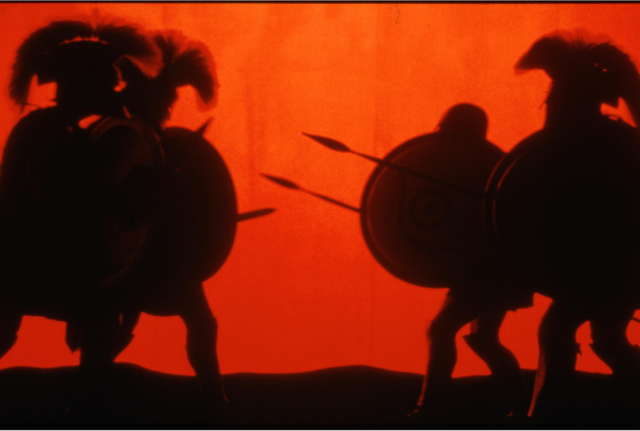
Since I was also teaching Canadian history and grade 12 “modern western civilization” at the same time, my saving factor became lesson planning. Organization has always been one of my best teacher skills, not so much a skill I possess in my personal life. Odd.
Thankfully I inherited a small collection of materials from the previous “ancient” history teacher. After weeding through it for things I liked, I had a sense of what came before me – not that I wanted to copy it wholesale. That’s not my way. I usually do like reinventing the wheel.
I made myself a lesson planning template and started planning units, tests, and then individual lessons. For me, the skill that needs the MOST practice in teaching is lesson planning. I find that almost right out of the gate, new teachers stop planning their lessons. When I host student teachers (teacher candidates, more precisely), they sometimes seem surprised that I want to see detailed lesson plans from them on a daily basis.
Anticipating how things will go is a big plus! These days I cannot imagine how anyone could teach without planning. Lessons need to keep moving swiftly as kids lose interest very quickly, sometimes instantaneously if you can get their interest at all.
Even after 20+ years I still write some lesson plans. When I was going on a short medical leave last year I wrote lessons for all the grade 12 world history classes I’d miss which ended up being the whole course because of surgery postponement!!
One might ask if lesson planning is a facet of creativity at all? I believe it is. It is in the planning where a new or experienced teacher comes up with an idea to make a topic interesting. In history that could be a trial, a role-play, a simulation, a short activity, or as we say today, a minds on. I admit that some of my most creative activities come to me spontaneously in the classroom. However, I don’t think my creativity would be able to kick in if the cognitive load had not already been reduced by doing so much planning.
My Most Creative Plan
Looking back is hard for me because – ironically – I have a bad memory. That’s bad for a history teacher, but it doesn’t usually affect content. Just events, names, faces in my OWN life. That said, one activity I developed on the topic of Hammurabi’s Code really stands out. The students first analyzed the document (okay, not all 282 laws) looking for ways that specific laws affected different groups of people in society – farmers, merchants, women, the king! They were divided into different groups based on roles on society and each had to come up with either a law they wanted to keep – and the justification for that – or the law that they wanted to ‘amend’ and their proposed revisions. They would then present to the king and his advisors – roles played on a rotating basis by each group of students. The kids would always love in-role activities. Sometimes they got so into it they sent out spies to check on the other groups. I remember it even getting it slightly out of hand as they tried to maintain secrecy until the final reveal of their scripted encounter with the king. Then of course there was always the moment when the king decided if he wanted to punish them for their suggestions!
Did I plan this? Well, I didn’t plan for all the offshoots such as spies and secrecy. But I planned the activity to such a degree that the kids had the freedom to give it a life of their own.
I don’t do this activity anymore for a number of reasons but mostly I am more cautious with role-plays now as I am much more mindful of presentism and the need for students to asses how probable (or not) it would have been for people to think a certain way. On the whole I am much more of an inquiry-based teacher now. However, I still find room for some role-plays such as my Black Death simulation.
Art Parallel
Now, do I practice enough in art to help develop my skills? Because I don’t paint on a daily basis I would say no. This usually results in me overthinking what I should do next because I don’t have a plan. Ultimately, my potential creativity and skill development are hindered before they even got out of the gate.
Having a sketchbook where one can practice is akin to writing a lesson plan. I definitely use my sketchbook. However, I don’t always follow through with a “good” copy, so to speak.
For Teachers
Get yourself a lesson template. In world history, use it to plan the societies you will include in the course, either through direct instruction, group work, or student inquiries. It’s very important to make sure the course is diverse and ever changing.
I use a template such as this to make my plan for what I will teach in a given semester.
